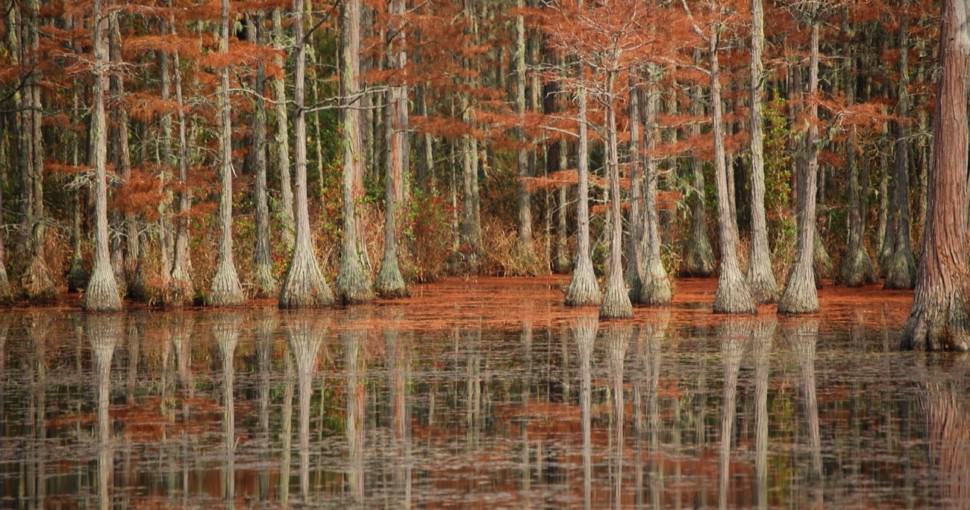In South Carolina, you can find many common trees. The climate of this state is common to other states in the southern United States, and is conducive to many varieties of trees that are seen all across the United States. There are many common trees that can be found in South Carolina, and this article will list twenty-five varieties, based on their prevalence throughout the state.
Contents
- 1. Sabal/Cabbage Palm (sabal palmetto)
- 2. Blackjack Oak (quercus marilandica)
- 3. Red Maple (acer rubrum)
- 4. Sassafras (sassafras albidum)
- 5. Sweet Gum (liquidambar styraciflua)
- 6. American Sycamore (platanus occidentalis)
- 7. Loblolly Pine (pinus taeda)
- 8. Black Tupelo (nyssa sylvatica)
- 9. American Beech (fagus grandifolia)
- 10. American Holly (ilex opaca)
- 11. American Hornbeam (carpinus caroliniana)
- 12. Black Cherry (prunus serotina)
- 13. Yellow Hawthorn (crataegus flavida)
- 14. Winged Elm (ulmus alata)
- 15. Flowering Dogwood (cornus florida)
- 16. Eastern Redbud (cercis canadensis)
- 17. Southern Magnolia (magnolia grandiflora)
- 18. Sweetgum Tree (liquidambar styraciflua)
- 19. Tulip Tree (liriodendron tulipifera)
- 20. Mockernut Hickory (carya tomentosa)
- 21. Sourwood (oxydendrum arboreum)
- 22. Wax Myrtle (morella cerifera)
- 23. Bald Cypress (taxodium distichum)
- 24. Eastern Hemlock (tsuga canadensis)
- 25. Eastern Redcedar (juniperus virginiana)
Though the trees mentioned here are found throughout South Carolina, certain species of tree will vary depending on the region. For example, common trees that are common in the coast regions of South Carolina will vary from common trees seen inland.
These twenty-five common varieties should be familiar to anyone who has spent time in South Carolina, whether it be for a day or their entire life.
1. Sabal/Cabbage Palm (sabal palmetto)
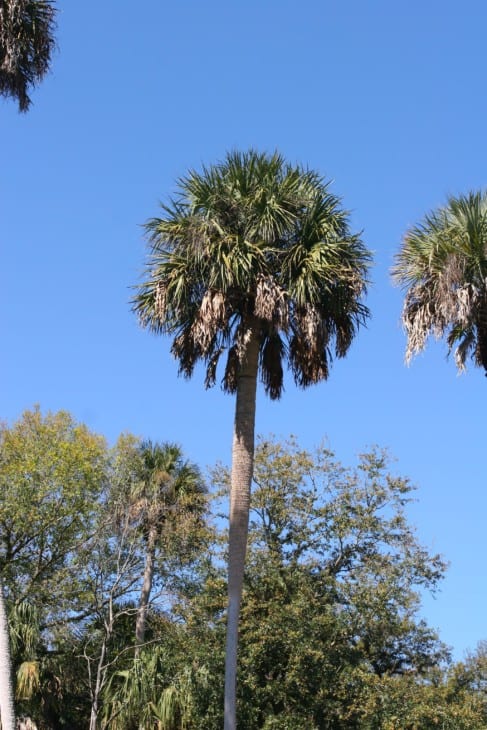
Though this tree is not native to South Carolina, it has become common throughout the state. You can find them near freshwater marshes or swamps, growing up to twenty feet tall.
This palm is found along the southeast coast of South Carolina. They are common in Florida as well.
2. Blackjack Oak (quercus marilandica)
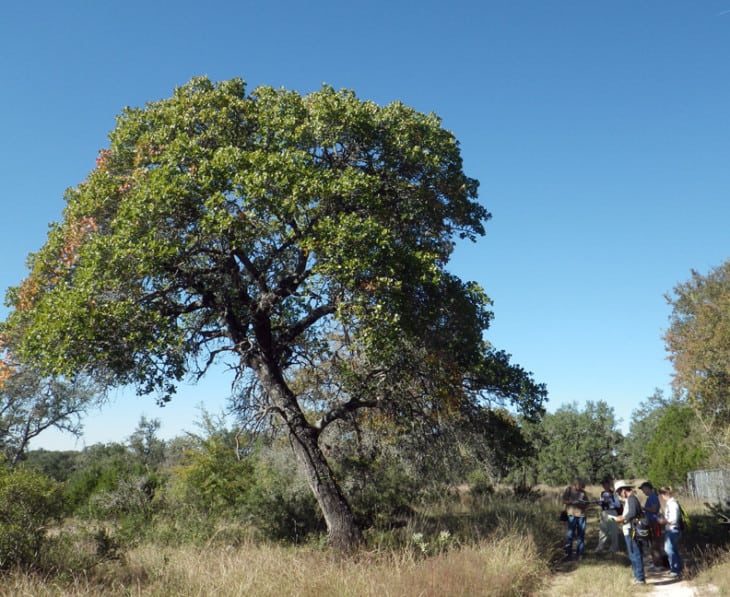
The blackjack oak is a common tree in the coastal region of South Carolina. It can be found growing throughout the southeastern United States, and grows to about forty feet tall. Its common name refers to its ability to grow well on poor soils and withstand drought without stress while still being able to produce an ample canopy of leaves, which often remain green during the common region’s dry season.
3. Red Maple (acer rubrum)
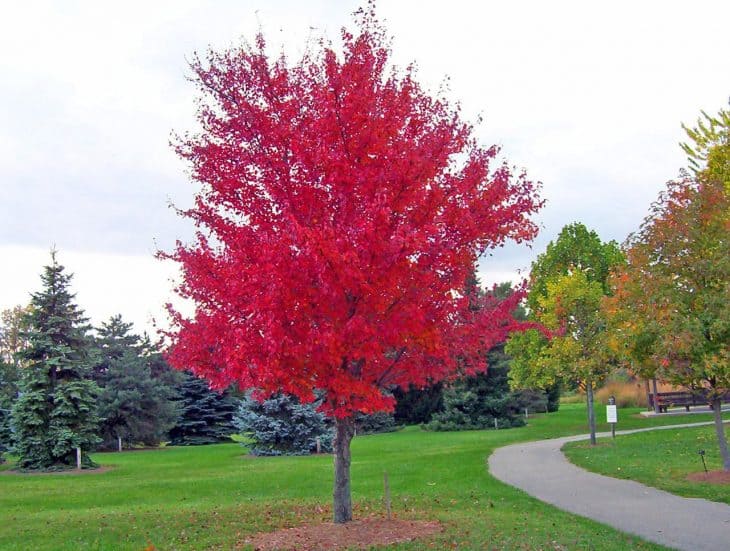
The red maple can be seen growing in various regions throughout South Carolina. It is common to plant this tree as street trees because of its vibrant color and ability to withstand polluted environments.
It is normal for red maples to reach up to eighty feet tall. They are prevalent near waterways on the coasts, but are not uncommon elsewhere.
4. Sassafras (sassafras albidum)
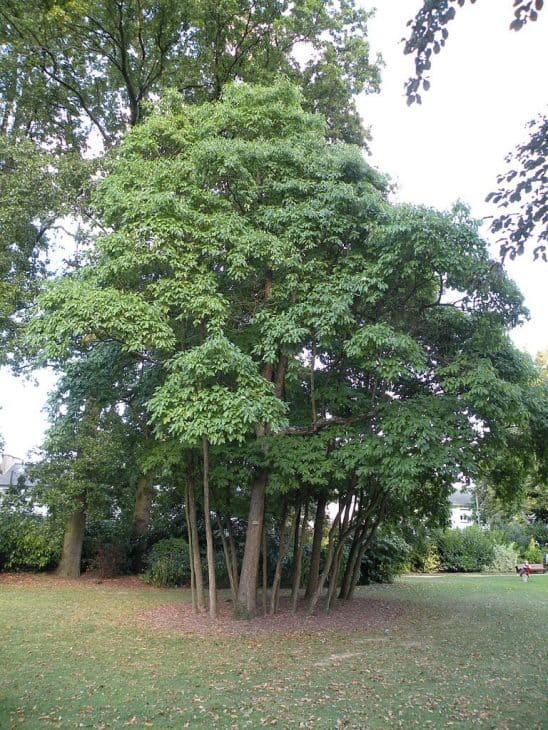
The sassafras is common throughout the state of South Carolina, and can grow to a height of about sixty feet. This tree has a very unique scent that is hard to describe. It’s normal for this species to have many smaller trunks growing from its base as well, which leads to quite an unusual appearance.
5. Sweet Gum (liquidambar styraciflua)
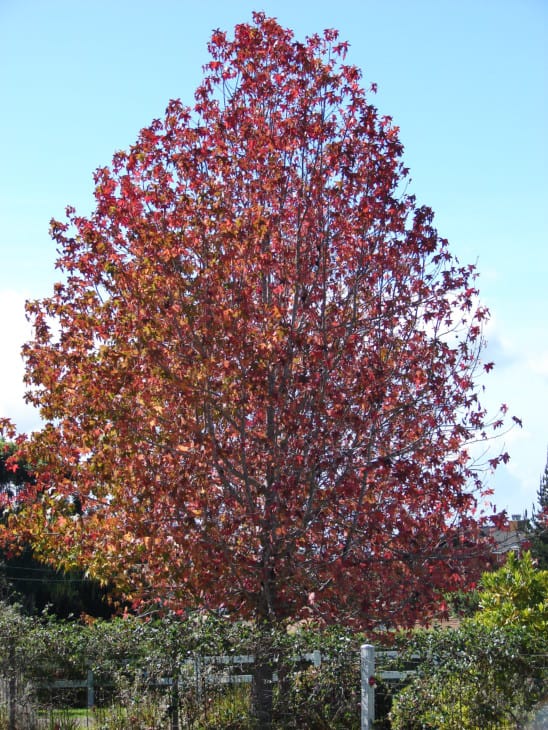
A tree that is prevalent throughout the southeastern United States, you can find sweet gums growing to heights of about sixty feet. This tree has star-shaped leaves and a greenish purple ball-like fruit.
6. American Sycamore (platanus occidentalis)
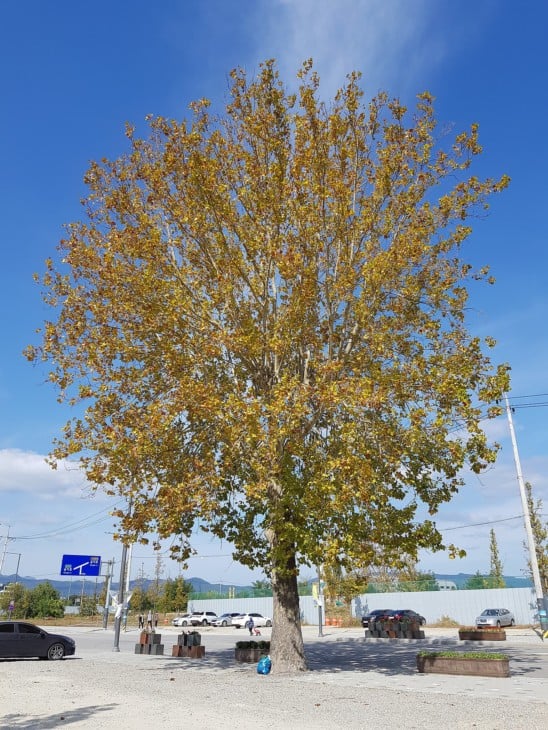
This tree has a range that includes most of the eastern United States. It is common for sycamores to have bark with many ridges and furrows, as well as diamond-shaped leaves with serrated edges.
7. Loblolly Pine (pinus taeda)
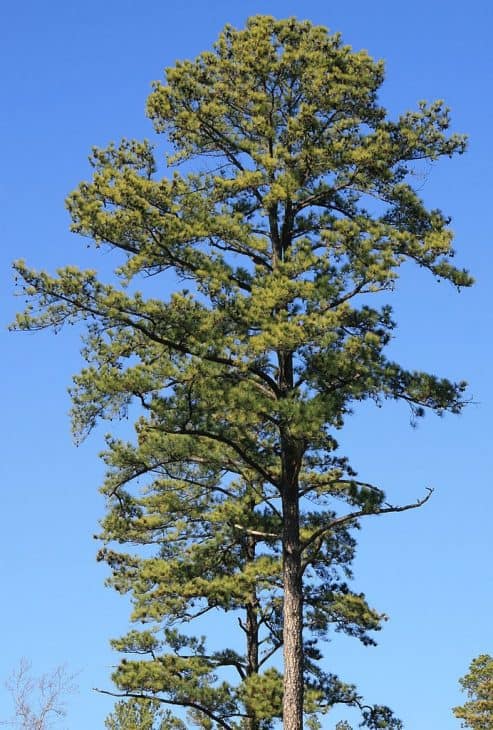
This tree can be seen throughout the southeastern United States and is common in South Carolina. It often reaches heights of up to one hundred feet and has serrated leaves with yellow/brown cones. It prefers wetland habitats, and it is common for this species to be planted near homes or commercial buildings because of its strong resistance against high winds.
8. Black Tupelo (nyssa sylvatica)
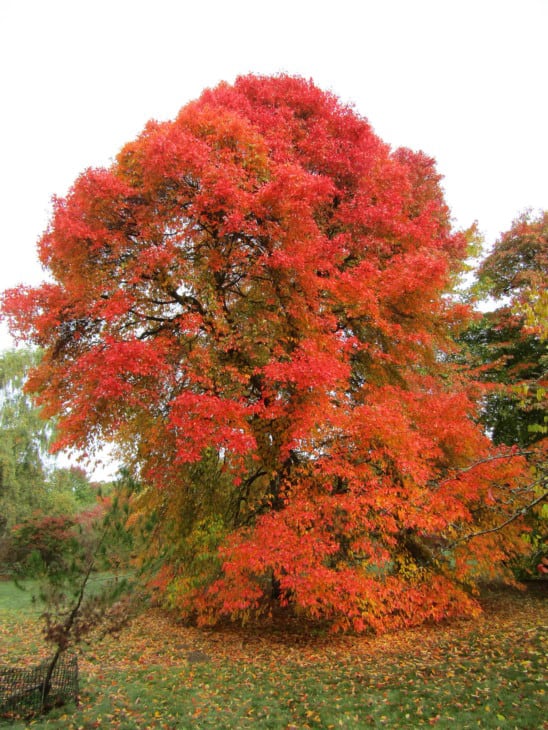
The Black Tupelo is prevalent throughout the southeastern United States, and can grow up to sixty feet. This tree is seen near waterways on the coasts, but can be common in other areas of South Carolina as well.
This tree has star-shaped leaves with clusters of white flowers that become drooping cones during the tree’s fruiting season.
9. American Beech (fagus grandifolia)
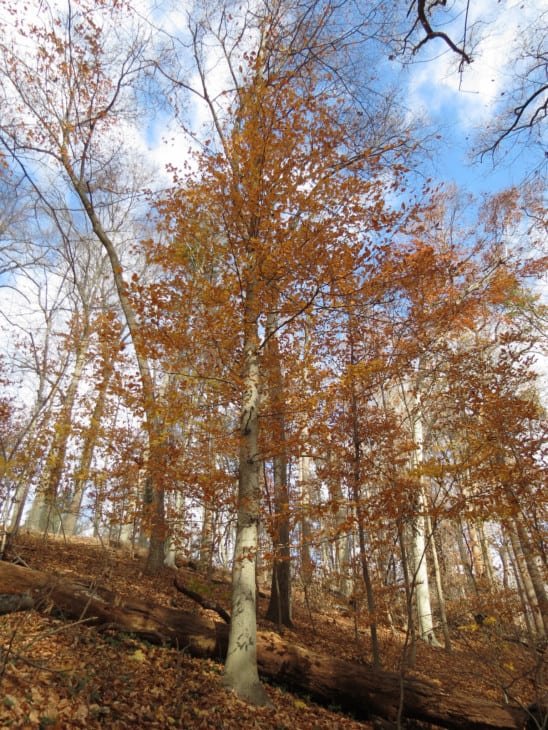
The American beech is common to the south-central states and can grow to heights of up to eighty feet. It has smooth, light gray bark and oval leaves that are dark green above and lighter beneath. Beeches like rich soils and moist habitats, and this tree prefers well-draining and humus-rich soil.
10. American Holly (ilex opaca)
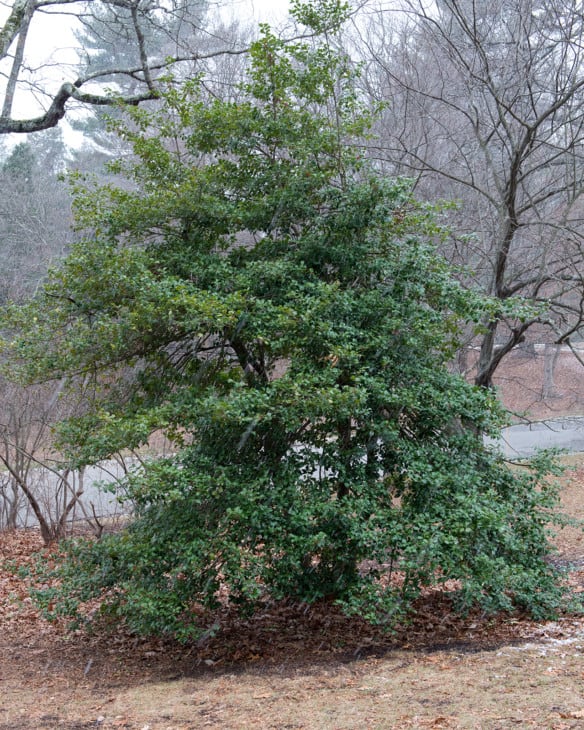
Prevalent to south-central states, hollies are known for their bright red berries. This tree is easy to distinguish because of its shiny leaves that have smooth margins and spiny fruit.
11. American Hornbeam (carpinus caroliniana)
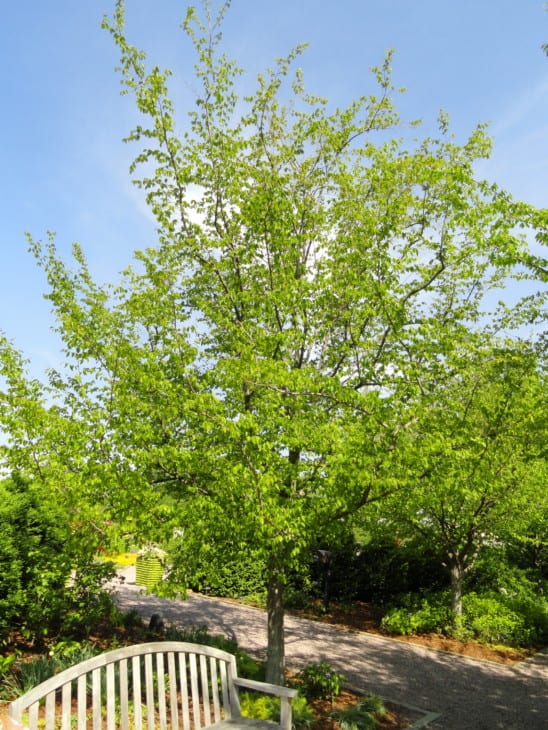
Hornbeams are native to south-central states and south-eastern Canada. It provides a great source of food for wildlife, as well as cover for many species of birds. The American Hornbeam is deciduous and can grow to be sixty feet tall.
12. Black Cherry (prunus serotina)
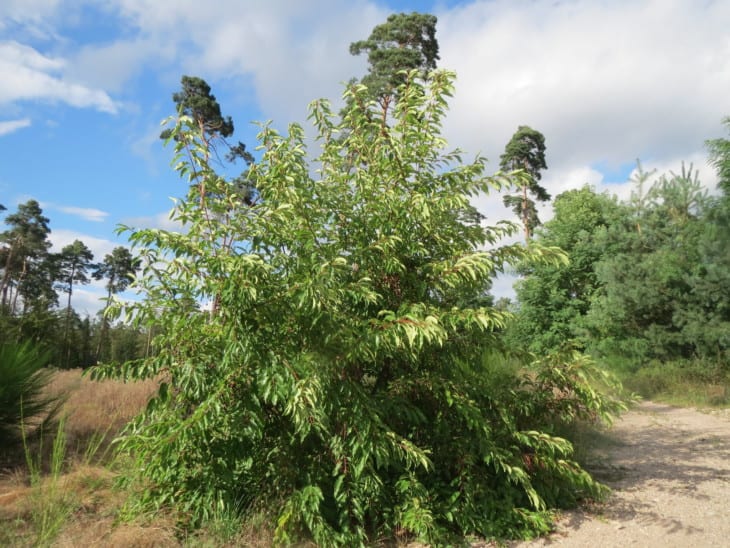
Black cherries are prevalent to south-central states, and you can find them growing throughout South Carolina. It is common for this tree’s bark to have curly ridges that are reddish brown in color. This species prefers moist soils that are well drained.
13. Yellow Hawthorn (crataegus flavida)
The yellow hawthorn is common in south-central states and south-eastern Canada. You can find this tree growing in low, wet habitats near bodies of water, but it also tolerates dry conditions well. It has greenish to white flowers with very sharp thorns.
14. Winged Elm (ulmus alata)
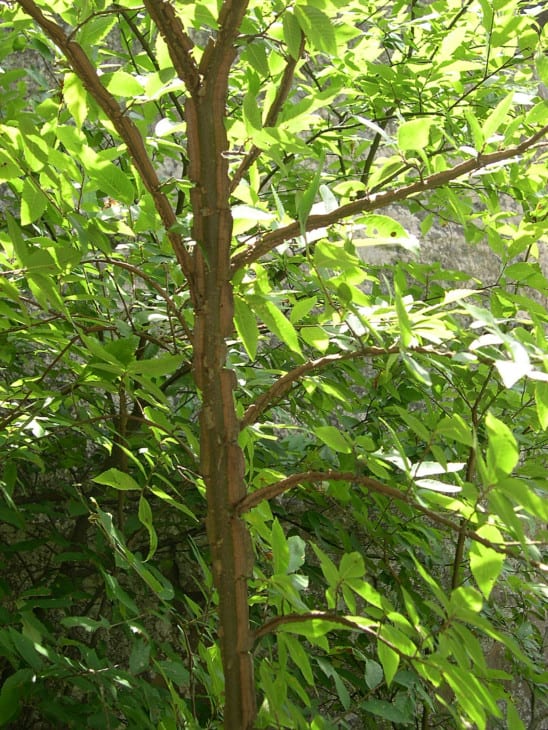
The Winged Elm is common to south-central states, South Carolina, and south-eastern Mexico. This species prefers moist to wet soils that are well drained. It’s easy to identify because of its bark that has ridges with winged sides that extend down the trunk.
15. Flowering Dogwood (cornus florida)
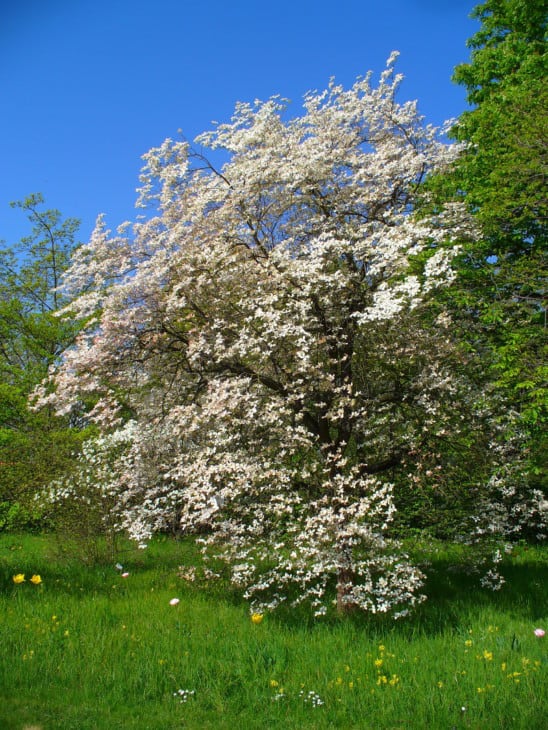
This species is common to south-central states such as South Carolina. The dogwood’s bark has fissures that are separated by ridges. It prefers well drained soils, but it can tolerate various moisture levels as well. The leaves of this tree are dark green above and lighter below.
16. Eastern Redbud (cercis canadensis)
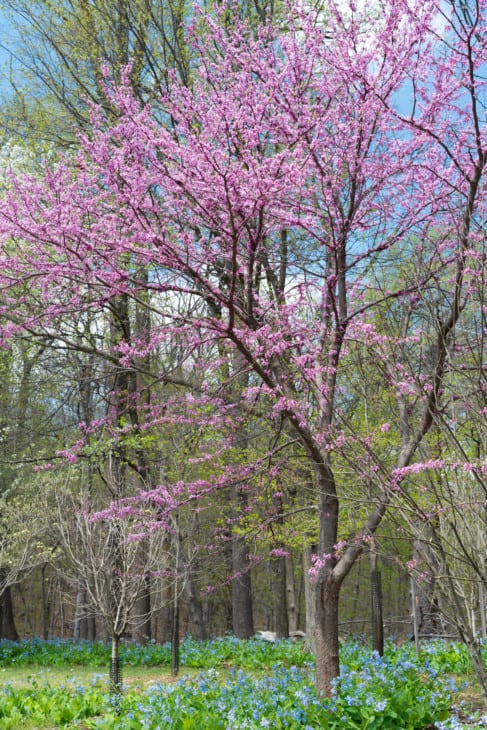
This species of tree is common to South Carolina. It has pink blooms that turn into brown, bean like pods during the summer months. This tree grows best in moist soils but can tolerate various levels of moisture as well.
17. Southern Magnolia (magnolia grandiflora)
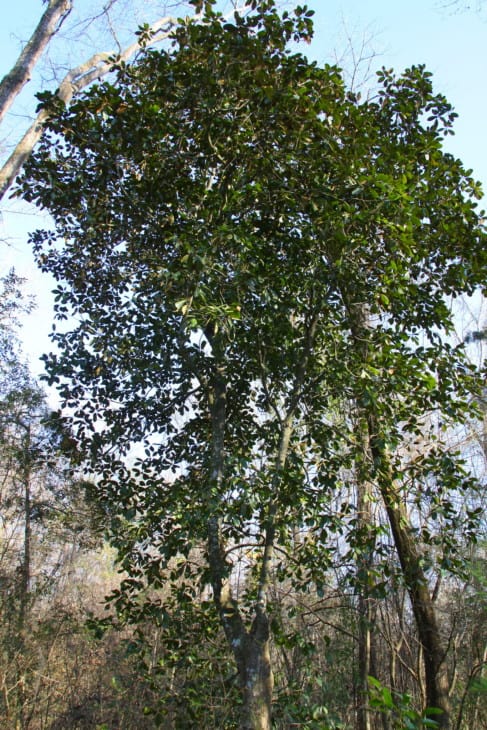
This common South Carolina tree has large leaves and beautiful, fragrant white blooms. This species prefers well-draining soils, but also tolerates various moisture levels. It can grow up to eighty feet tall.
18. Sweetgum Tree (liquidambar styraciflua)

Also known as the “sweet gum,” this tree is common to south-central US states and south-eastern Canada. It has star-shaped leaves that are green above and lighter beneath. This species prefers rich, moist soils but tolerates various moisture levels.
19. Tulip Tree (liriodendron tulipifera)
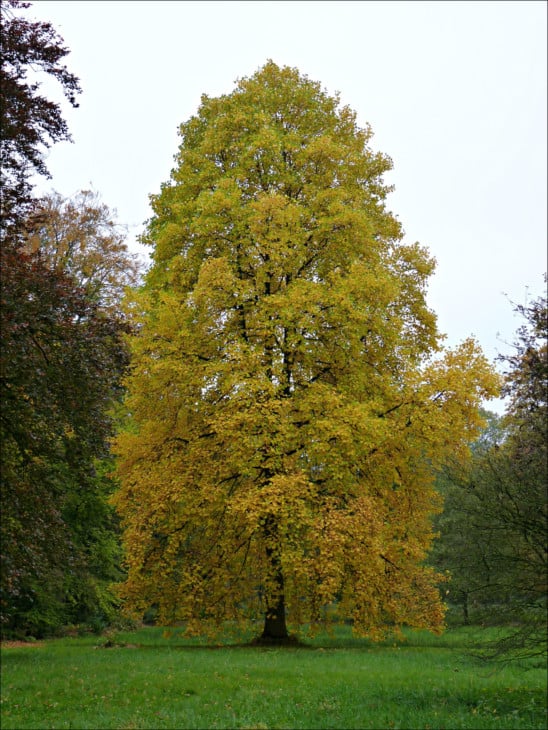
The tulip tree is common throughout South Carolina, south to Florida and west into south-central Texas. This tree has fan-shaped leaves that are bright green with many yellowish fall coloration. There are also orange flowers that bloom in the springtime, as well as uniquely shaped pods.
20. Mockernut Hickory (carya tomentosa)
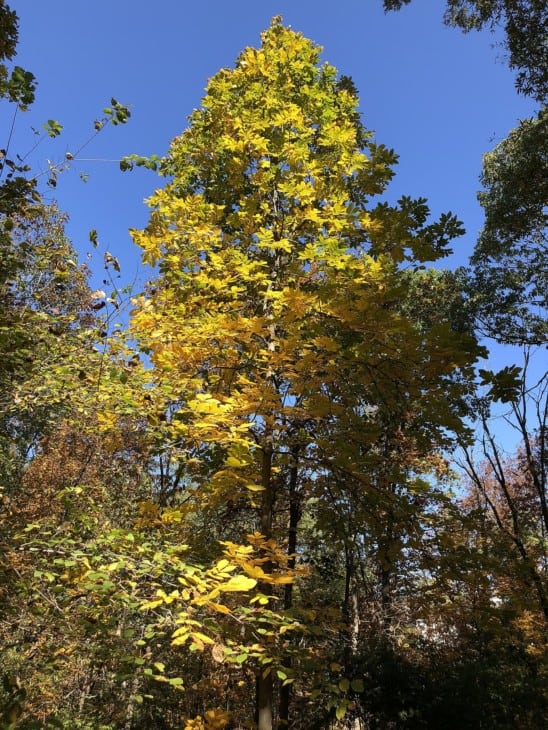
This tree is common throughout South Carolina, south to Florida and west to south-central Texas. It has greenish bark that’s marked with lighter, horizontal lenticels. Leaves are oval in shape and have a coarsely serrated margin.
21. Sourwood (oxydendrum arboreum)
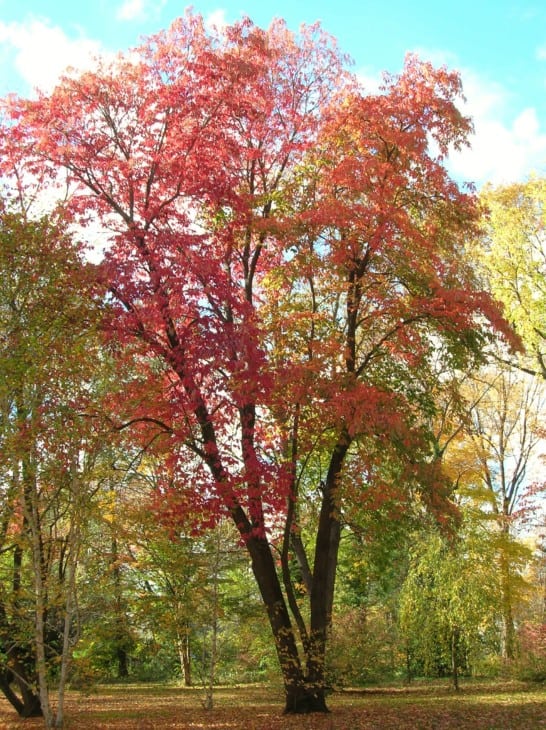
The Sourwood is prevalent in South Carolina and south to Florida. The leaves of this tree are attractive and copper-colored in the fall, as well as fragrant white flowers that bloom in springtime.
22. Wax Myrtle (morella cerifera)
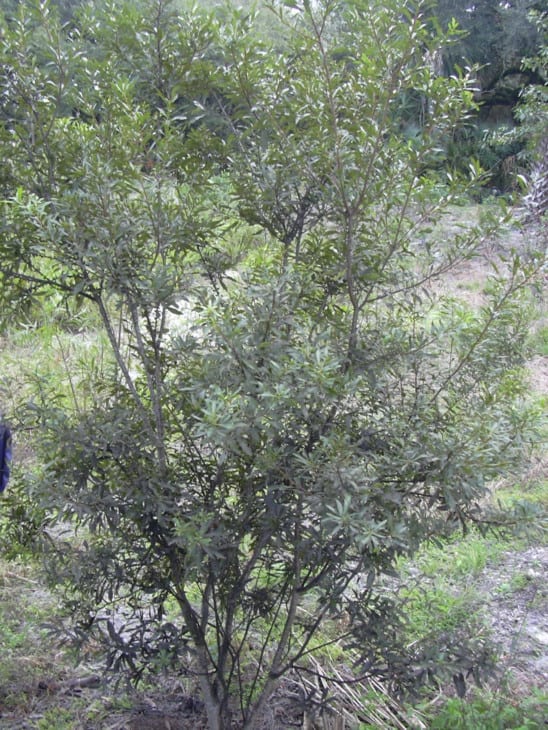
This species is native south of south-central South Carolina and south to Florida. Leaves are dark green on top, with a waxy coating on the undersides that gives them a whitish appearance. The bark of this tree is smooth, gray, and has lenticels.
23. Bald Cypress (taxodium distichum)
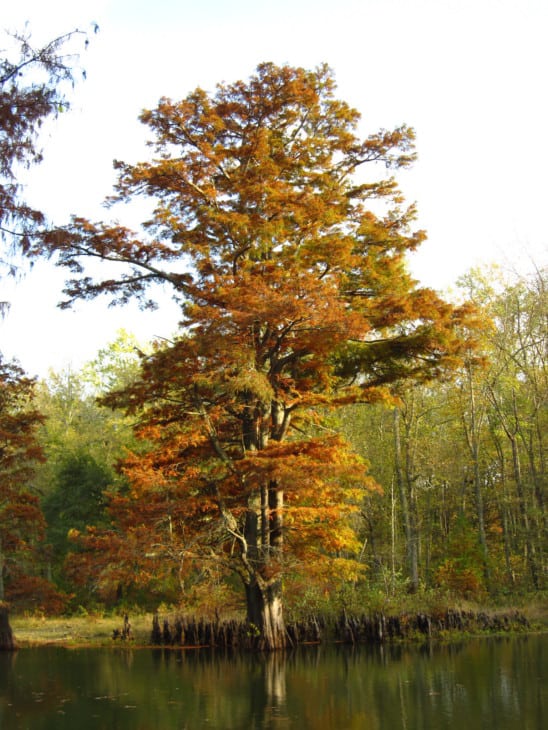
This species is common in South Carolina, east to Florida, and west into central Texas. The bald cypress has greenish, scaly bark that’s marked with dark brown lines. Leaves are typically 2-3 inches long with a round shape.
24. Eastern Hemlock (tsuga canadensis)
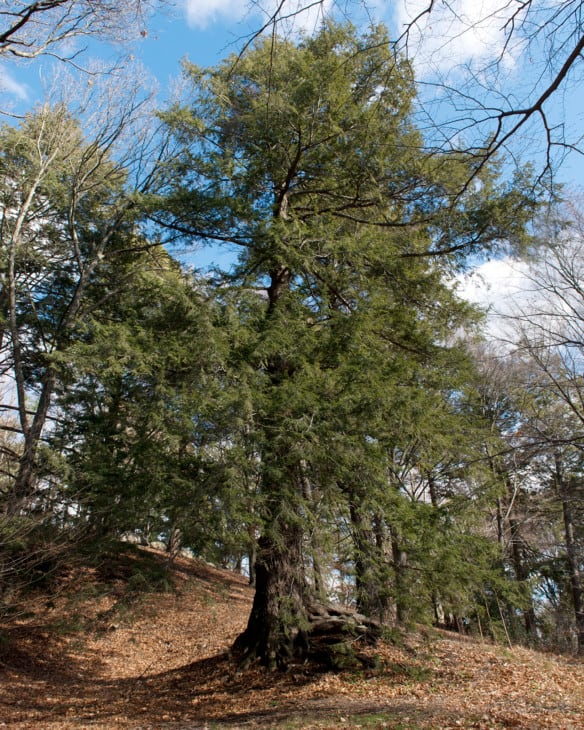
This tree can be found in South Carolina, south to Florida and west into south-central Texas. The hemlock prefers moist soils that are high in acidity, but tolerates various moisture levels as well. It has greenish needles with blunt tips, flattened stems, and rusty brown bark rings.
25. Eastern Redcedar (juniperus virginiana)
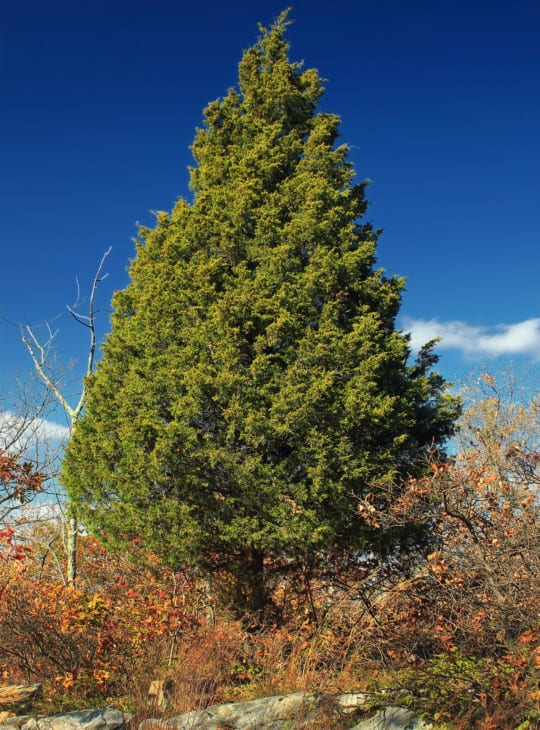
This south-central US tree has dark green foliage during summer, but it turns a beautiful red color in the fall. It tolerates dry, well drained soils and can be used as an evergreen hedge or windbreak.

